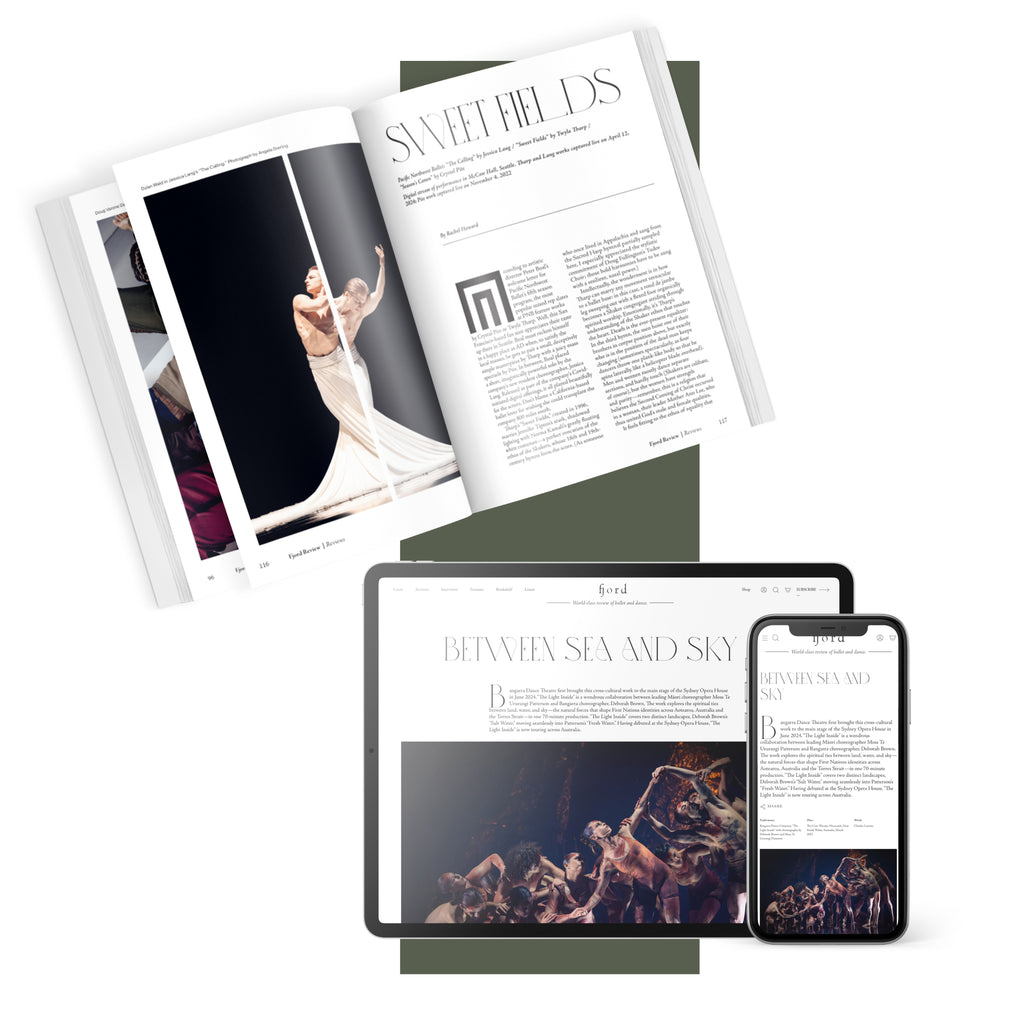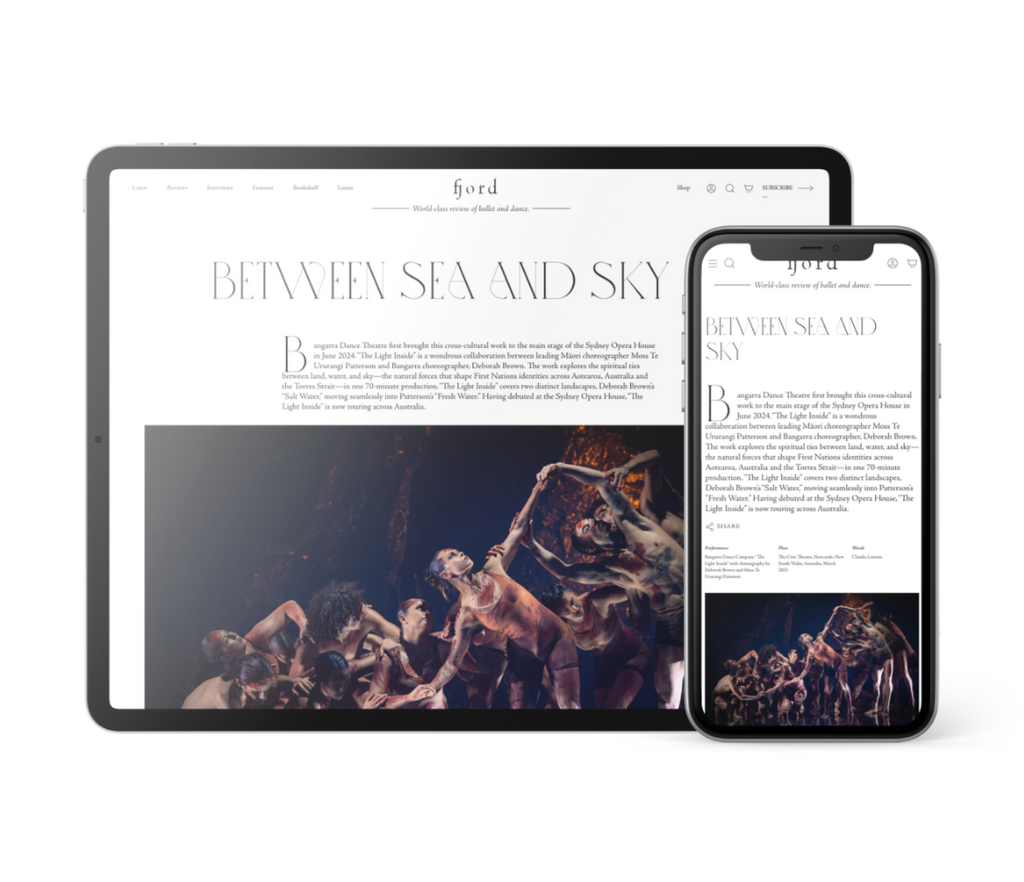As the audience files in, the first view of the stage is eye-popping. Floor and rear wall are covered with the vividly colored projection of dense, sun dappled vegetation. The leaves shimmer and we can hear the sound of children’s voices. In “Dear Lord, Make Me Beautiful” Abraham ponders a changing world and his place in it, addressing themes of aging and transition. The production, commissioned by the Park Avenue Armory with support by Dance Reflections by Van Cleef & Arpels, is a pleasing blend of visual environment designed by Cao Yuxi (JAMES), live music composed and performed by the chamber group, yMusic, and a movement score to which Abraham brings an expanded A.I.M. company of seventeen dance artists, including himself.
The work opens with Abraham alone onstage, jogging in a loop with a wide grin on his face. As his rounds repeat, the smile fades and he begins to stumble and pant. At one point, he stops to look around—is he lost? He exits the stage and a pair of dancers replace him, working together in a loose unison. More entrances accumulate, and soon the full community is engaged in a series of patterns as they move on and off-stage. They’re dancing in a field of leaves that gradually changes colors, subtly shifting the mood. At one point, the leaves turn a shade of white that blends with the performers’ pant legs, making it seem their feet are immersed in snow.











comments